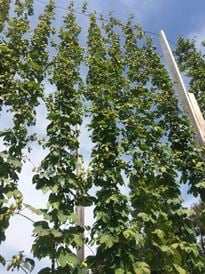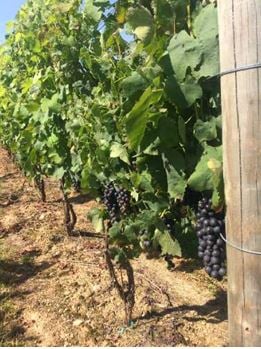 Your favorite beer is filtered with diatomaceous earth filter aid
Your favorite beer is filtered with diatomaceous earth filter aid
Cheers! Oktoberfest starts Saturday, September 21 in Germany. Let’s drink up some knowledge about beer (and wine!) and diatomaceous earth (DE) filter aid!
So, why does Oktoberfest start in September?
The historical background: the first Oktoberfest was held in the year 1810 in honor of the Bavarian Crown Prince Ludwig's marriage to Princess Therese von Sachsen-Hildburghausen. The festivities began on October 12, 1810 and ended on October 17th with a horse race. In the following years, the celebrations were repeated and, later, the festival was prolonged and moved forward into September.
By moving the festivities up, it allowed for better weather conditions. Because the September nights were warmer, the visitors were able to enjoy the gardens outside the tents and the stroll over 'die Wiesen' or the fields much longer without feeling chilly. Historically, the last Oktoberfest weekend was in October and this tradition continues into present times.
But there's more to this story. Thanks to Ethan Alpern at the US Geological Society for some interesting information!
Today, Oktoberfest celebrations feature large quantities of pumpkin-spiced beer, but behind that is the fascinating geologic process of making the beer and wine used to celebrate Oktoberfest each year.
Hops: The Geologic Ingredient
 Cascade of beer hops growing tall
Cascade of beer hops growing tall
Hops, the flower of the common hop plant is best known for its use to flavor beers. It is a plant species that grows as a vine and is native to temperate regions of the northern hemisphere, such as North America, Europe, and western Asia.
There are many varieties of hops, which are used in the flavoring process of brewing beer. Each variety, grown in various areas, provides a different accent of flavor, contributing to the different flavors for each brand of beer. Other factors in flavor are ingredients such as barley and wheat, as well as different brewing techniques.
Hops are a species of vine, whose flowers are used in the beer-brewing process. It provides flavor to beer, and has several varieties. This variety is called Cascade.
As hops plays an important role in the flavor of beer, the alcohol and viscosity (thickness) are a function of other ingredients such as the initial sugar content which is then fermented by yeast into alcohol.
The Cascade variety of hops can grow to be extremely large and provide a great harvest and flavor for nearby breweries. Each type of hops requires different soil conditions, but hops in general share some broad requirements.
The soil must be crumbly and well drained with low soil acidity. Hops also require access to a lot of water, so the presence of surface water is extremely beneficial.
Geology Makes a Fine Wine
It’s not just hops that rely on geology, not all grapes are ideal for wine-making either. In fact, the soil, geology, and climate combine to make the difference between low-value table grapes and delicious wine. Most winemakers will say that nature and the Earth are as important as people in making the best wine.
 Shiraz grapes on the vine
Shiraz grapes on the vine
Unlike hops, though, cultivators need to be concerned about giving grapes too many nutrients. USGS scientist Larry Meinert describes how grapes, when supplied with too much water and nutrients can over-produce and result in mediocre wine. Unlike most gardening, the more stressed the grapes, the better they become for wine production.
Diatomite: The Natural Filter Aid
Diatomaceous earth filtration is a key step to beer filtration and wine filtration. It is important to make sure that these beverages are clean and healthy. Luckily, the Earth has provided a natural filter in the process, a mineral called Diatomite, or diatomaceous earth. The largest deposits of diatomaceous earth are found in Northern Nevada and Oregon. The world's largest producing diatomaceous earth mine and plant is in Lovelock, Nevada, and operated by EP Minerals, a U.S. Silica company.
DE is used in agriculture for grain storage as an anti-caking agent, an insecticide, and as a soil amendment and fertilizer carrier.
Diatomite is a chalk-like, soft, and very fine-grained sedimentary rock, usually light in color (white if pure). It is very finely porous, very low in density (floating on water at least until saturated), and essentially chemically inert in most liquids and gases.
The principal use of diatomite is as a filter aid for beer, wine, juice and edible oil, and even in things like in toothpaste and cosmetics. It is also used as filler in a variety of products from paints to dry chemicals, and as insulation material.
Cheers to Oktoberfest, brought to you by diatomaceous earth filter aid
Whether you’re celebrating Oktoberfest with a cold pumpkin-spiced beer or a glass of red wine, make sure to thank diatomaceous earth filtration with every sip!

